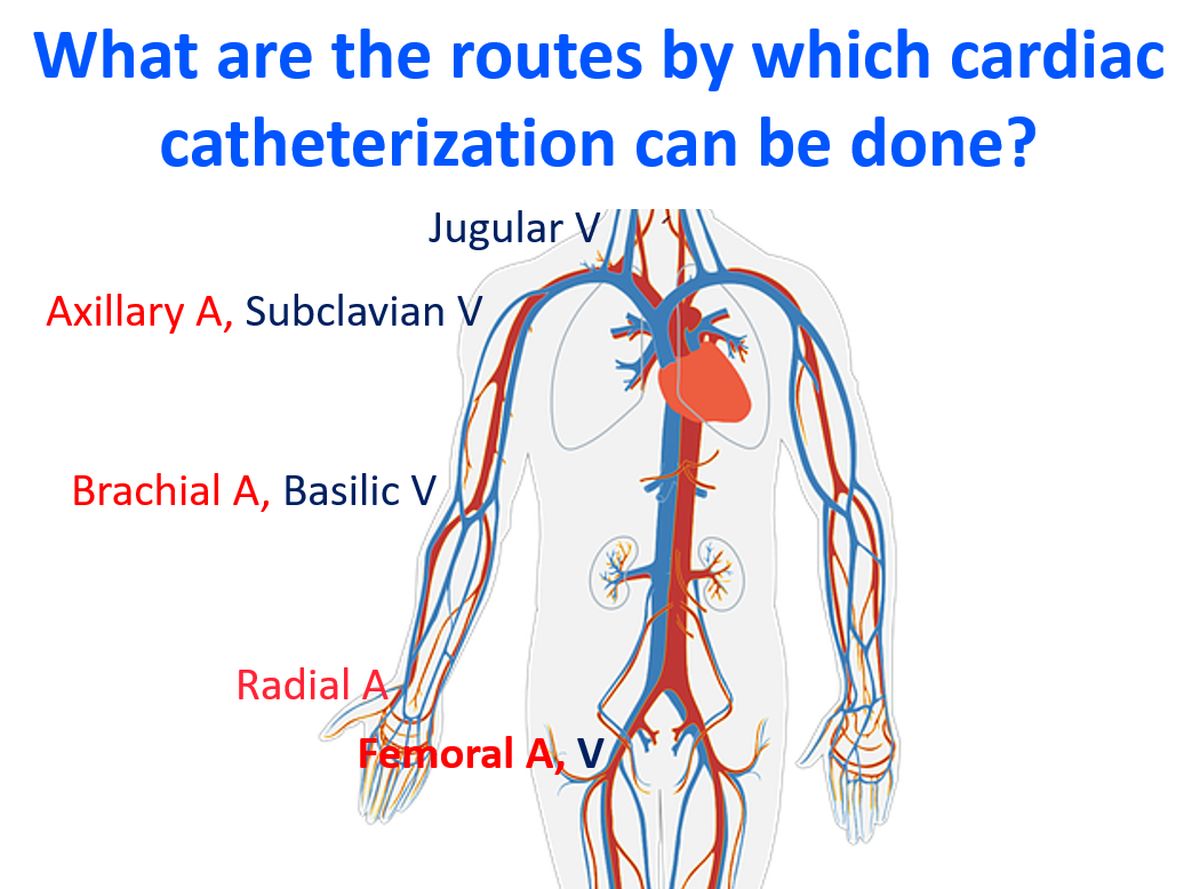What are the routes by which cardiac catheterisation can be done?
What are the routes by which cardiac catheterisation can be done?
The most common route for combined left and right heart catheterization is by the femoral route, through the groin. Both the femoral artery and the femoral vein can be entered by percutaneous puncture. It easy to stop the bleeding once the procedure is over and the sheaths are taken out. The vessels are compressed over the femoral head. But the bleeding risk is higher than radial route for coronary angiography as the femoral artery is a larger and deeper vessel. Femoral route is faster and often resorted to in case of emergency like primary angioplasty in a person with cardiogenic shock.

Other routes are the jugular vein in the neck, basilic vein near the elbow, brachial artery near the elbow and radial artery near the wrist. Radial artery is preferred for coronary angiography over the femoral route due to lesser access site complications. But chance for arterial spasm is there in radial route. Occasionally the axillary artery and subclavian vein can be used if other sites are not accessible.



